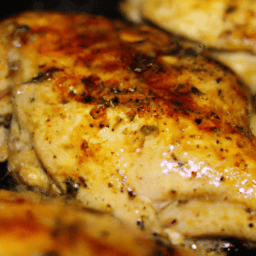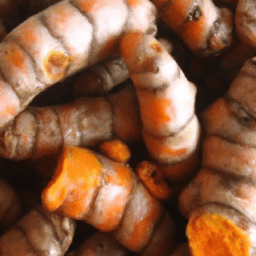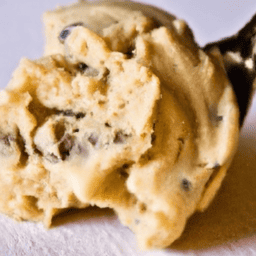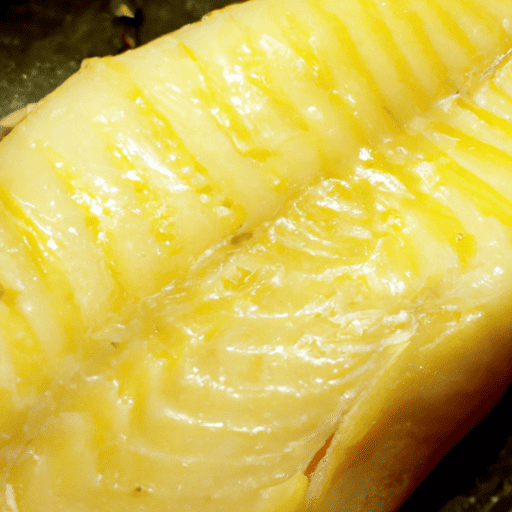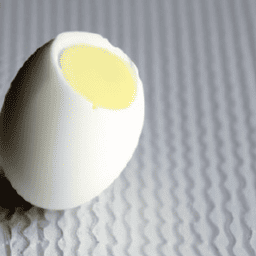How To Cook Juicy Chicken Breast
Imagine sinking your teeth into a perfectly cooked, tender juicy chicken breast, bursting with flavor. In this article, you will learn the secrets to cooking a succulent chicken breast that will make your taste buds dance with joy. From proper seasoning and marinating techniques to mastering the perfect cooking temperature, we will guide you step-by-step to achieve culinary excellence in the realm of juicy chicken breasts. Get ready to become a poultry aficionado as we unlock the secrets to cooking this delectable and versatile protein.
Select the Right Chicken Breast
When it comes to cooking chicken breast, one of the most important factors to consider is the quality of the meat. Choosing organic chicken breast is a great way to ensure that you are getting high-quality, natural meat. Organic chickens are raised without the use of antibiotics or hormones, which can be harmful to both the chickens and the consumers. By opting for organic chicken breast, you can be confident that you are making a healthy and sustainable choice.
Understanding the labels related to hormone and antibiotic-free chicken is also crucial. These labels indicate that the chickens have been raised without the use of hormones or antibiotics. Hormones are often given to chickens to promote growth, but they can have adverse effects on human health. Antibiotic use in chickens can lead to the development of antibiotic-resistant bacteria, which can be a serious public health concern. By choosing hormone and antibiotic-free chicken breast, you can reduce your exposure to these potentially harmful substances.
When selecting chicken breast, size and color can also play a role. The size of the chicken breast can determine cooking times and portion sizes, so it is essential to choose breasts that are suitable for your needs. Additionally, color can indicate freshness. Fresh chicken breast should be pink and have a clean smell. Avoid chicken breasts that are pale or have a strange odor, as these can be signs of spoilage.
Preparation Before Cooking
Properly preparing chicken breast before cooking is essential for both safety and flavor. One of the first steps in preparation is washing and cleaning the chicken breast thoroughly. Washing the chicken helps to remove any bacteria or other contaminants on the surface. Use cold water to rinse the chicken and pat it dry with paper towels. Remember to wash your hands, utensils, and countertops after handling raw chicken to prevent cross-contamination.
Bringing the chicken breast to room temperature before cooking is another important step. Allowing the chicken to sit at room temperature for about 30 minutes before cooking helps to ensure even cooking throughout the meat. This is especially important for larger chicken breasts, as they can take longer to cook in the middle if they are cold from the refrigerator.
Adding seasoning to the chicken breast is an excellent way to enhance its flavor. There are endless options when it comes to seasoning chicken breast. You can go for classic combinations like salt, pepper, and garlic powder, or get creative with herbs and spices such as paprika, thyme, or cumin. Experiment with different seasonings to find your favorite flavor profile.
Methods of Tenderizing
Chicken breast can sometimes be tough and less enjoyable to eat. Tenderizing the meat can help to improve its texture and make it more enjoyable. There are various methods of tenderizing chicken breast, and each has its benefits.
One of the traditional ways to tenderize chicken breast is through physical methods like pounding. Using a meat mallet or a rolling pin, gently pound the chicken breast to flatten it to an even thickness. This helps to break down some of the muscle fibers, resulting in a more tender and evenly cooked piece of meat.
Marinating the chicken breast is another effective method of tenderizing. Marinades typically consist of an acidic ingredient such as lemon juice or vinegar, along with various herbs, spices, and oils. The acid helps to break down the proteins in the meat, resulting in a tender and flavorful chicken breast. Marinating the chicken for at least 30 minutes, but ideally for a few hours or overnight, allows the flavors to penetrate the meat fully.
Marinating the Chicken
Marinating chicken breast not only adds flavor but also helps to tenderize the meat. The process of marinating involves soaking the chicken in a liquid mixture that contains various seasonings and spices. The significance of marinating cannot be overstated, as it adds depth of flavor to the chicken and ensures juiciness.
There are different types of marinades you can use for chicken breast, including acidic marinades, like lemon or vinegar-based ones, and dairy-based marinades, like those with yogurt or buttermilk. Acidic marinades work by breaking down the proteins in the meat, resulting in a more tender chicken breast. Dairy-based marinades add moisture and tenderness to the meat.
The recommended marinating time for chicken breast typically ranges from 30 minutes to several hours, depending on the recipe and ingredients. It is crucial to marinate the chicken in the refrigerator to prevent bacterial growth. The longer you marinate, the more intense the flavors will be, but be cautious not to exceed the recommended time, as the texture of the meat can become mushy.
Understanding the Cooking Process
Understanding the cooking process is essential for achieving perfectly cooked chicken breast. Heat plays a significant role in how the chicken cooks and the final texture and flavor.
First, it is important to understand the effects of heat on chicken breast. Heating the chicken breast causes the proteins to denature and coagulate, resulting in the cooked texture. However, excessive heat can lead to dry, tough meat, so it is crucial to cook chicken breast at the appropriate temperature and for the recommended time.
The right cooking temperature for chicken breast is around 165°F (74°C). This temperature ensures that the chicken is fully cooked, killing any harmful bacteria that may be present. Investing in a meat thermometer is highly recommended to accurately determine when the chicken is done. Insert the thermometer into the thickest part of the breast without touching the bone for an accurate reading.
Resting time is often overlooked but essential for a juicy and tender chicken breast. After cooking the chicken breast, let it rest for about 5-10 minutes before slicing or serving. This allows the juices to redistribute throughout the meat, resulting in a more flavorful and moist chicken breast.
Grilling the Chicken Breast
Grilling chicken breast is a popular cooking method that imparts a smoky flavor and gives the meat a beautiful char. Follow these steps to grill juicy chicken breasts:
- Set up the grill by preheating it to medium-high heat.
- Clean and oil the grill grates to prevent sticking.
- Season the chicken breasts with your desired seasonings or marinades.
- Place the chicken breasts on the preheated grill and close the lid.
- Cook the chicken for 6-7 minutes per side, or until the internal temperature reaches 165°F (74°C).
- Remove the chicken from the grill, tent it with foil, and let it rest for 5-10 minutes before slicing.
Grilling time can vary depending on the thickness of the chicken breasts, so it is important to keep an eye on them to prevent overcooking. Remember to always use tongs or a spatula to flip the chicken breasts, as using a fork can cause the juices to escape.
Baking the Chicken Breast
Baking chicken breast is a reliable and hands-off method that yields tender and flavorful results. To bake juicy chicken breasts, follow these steps:
- Preheat the oven to 400°F (200°C) and line a baking sheet with parchment paper or aluminum foil.
- Season the chicken breasts with your desired seasonings or marinades.
- Place the chicken breasts on the prepared baking sheet.
- Bake for 20-25 minutes, or until the internal temperature reaches 165°F (74°C).
- Remove the chicken from the oven and let it rest for 5-10 minutes before serving.
Cooking times may vary depending on the size and thickness of the chicken breasts. To ensure even cooking, it is recommended to pound the chicken to an even thickness before baking.
Pan-Frying the Chicken Breast
Pan-frying chicken breast is a quick and versatile cooking method that results in a golden-brown crust and juicy interior. Here’s how to pan-fry chicken breast:
- Choose a non-stick skillet or a cast-iron pan to prevent sticking.
- Heat a small amount of oil or butter over medium-high heat.
- Season the chicken breasts with your desired seasonings or marinades.
- Place the chicken breasts in the hot pan and cook for 6-7 minutes per side, or until the internal temperature reaches 165°F (74°C).
- Remove the chicken breasts from the pan and let them rest for 5-10 minutes before slicing.
To avoid dry and tough chicken, it is important not to overcrowd the pan. Cook the chicken in batches if necessary.
Storing Leftovers
Proper storage of cooked chicken breast is crucial to maintain its quality and prevent foodborne illnesses. Follow these guidelines to store your leftovers safely:
- Allow the cooked chicken breast to cool to room temperature before storing.
- Place the chicken in an airtight container or wrap it tightly in aluminum foil or plastic wrap.
- Store the chicken breast in the refrigerator and consume it within 3-4 days.
- When reheating leftovers, ensure that the internal temperature reaches 165°F (74°C) to kill any potential bacteria.
Utilizing leftovers is a great way to minimize food waste. Leftover chicken breast can be used in a variety of dishes, such as salads, sandwiches, wraps, or stir-fries. Get creative and experiment with different recipes to make the most out of your leftovers.
Frequently Asked Questions
How to know if the chicken is fully cooked?
To ensure that chicken breast is fully cooked, use a meat thermometer to check the internal temperature. The target temperature is 165°F (74°C) for chicken breast. Insert the thermometer into the thickest part of the meat without touching the bone to get an accurate reading.
Dealing with common cooking issues
Dry and tough chicken breast can be a common issue when cooking this lean meat. To avoid dryness, make sure not to overcook the chicken and follow recommended cooking times and temperatures. Tenderizing techniques such as pounding or marinating can also help improve the texture of the meat.
Health benefits of chicken breast
Chicken breast is a lean source of protein that is low in calories and fat. It is also a good source of essential nutrients, including vitamins B6 and B12, zinc, and selenium. Incorporating chicken breast into a balanced diet can help support muscle growth, boost immunity, and contribute to overall good health.

